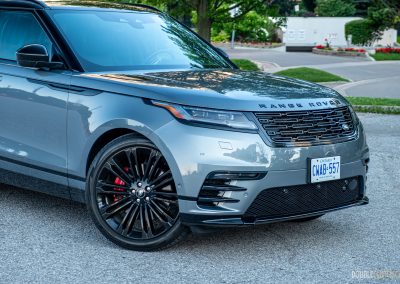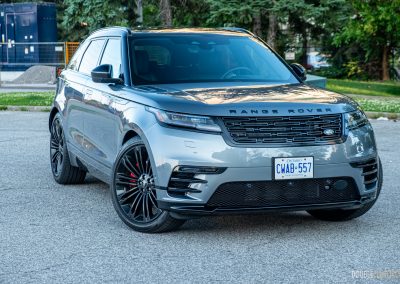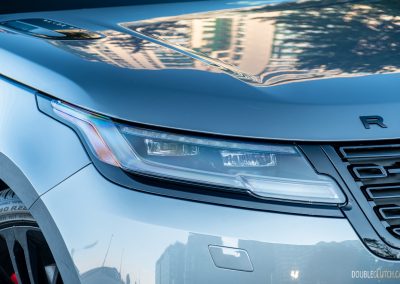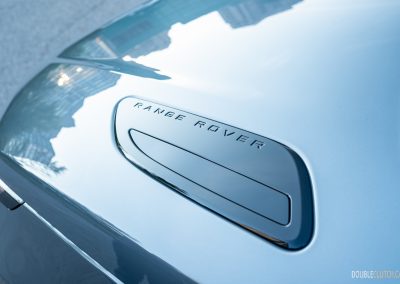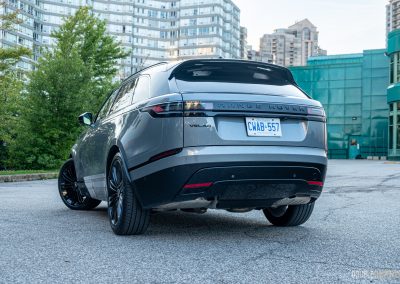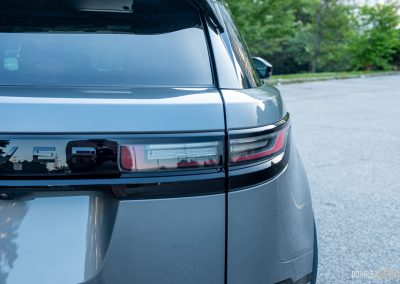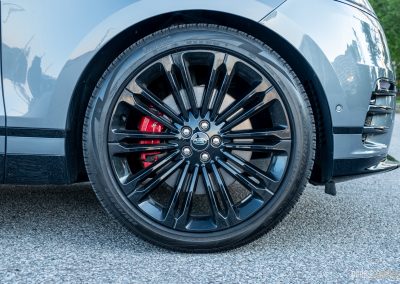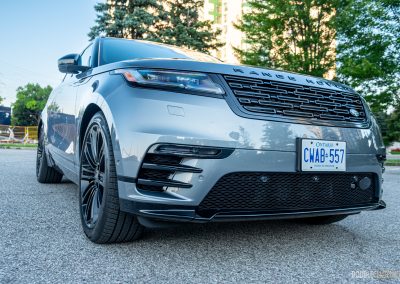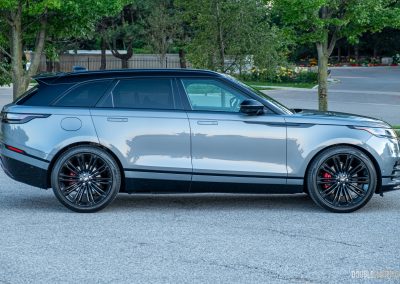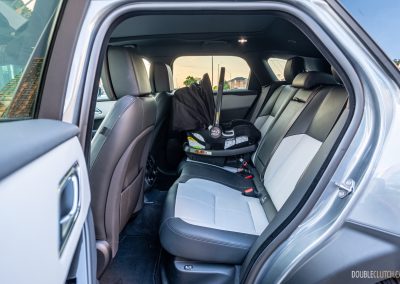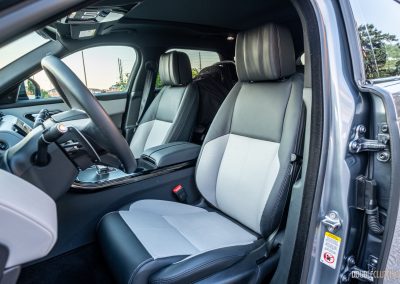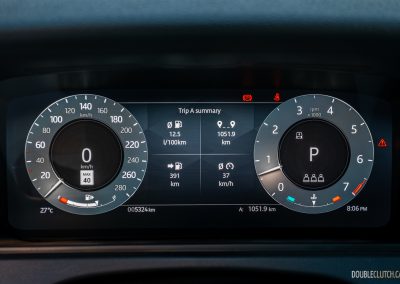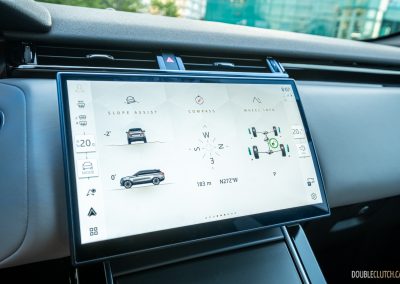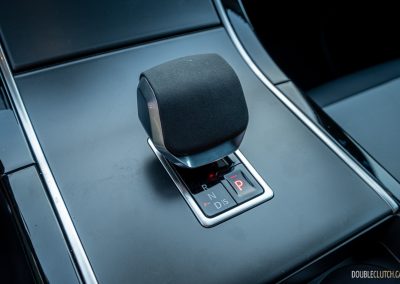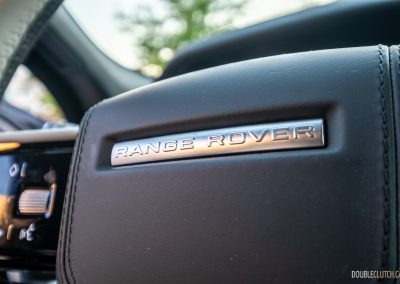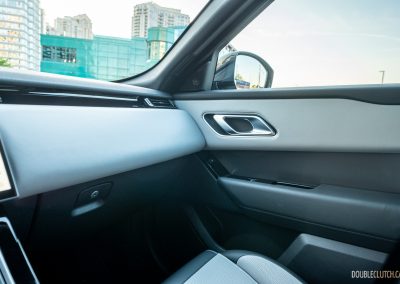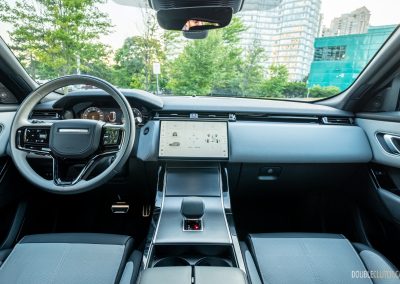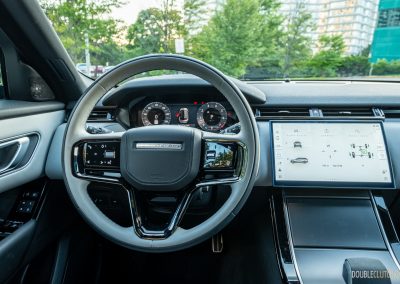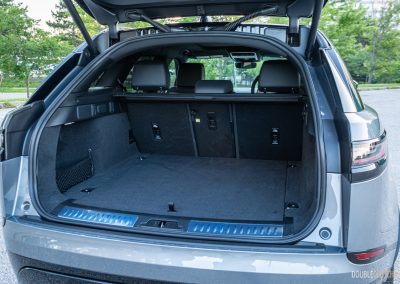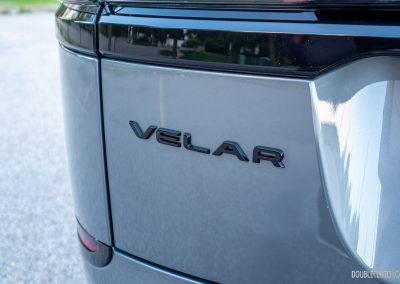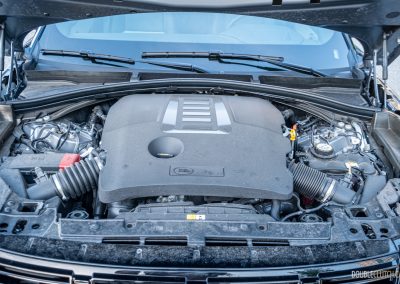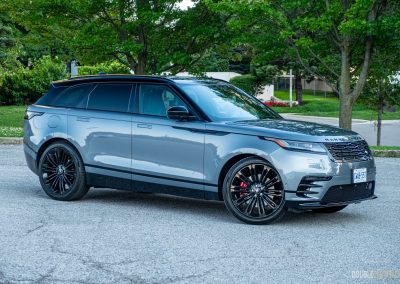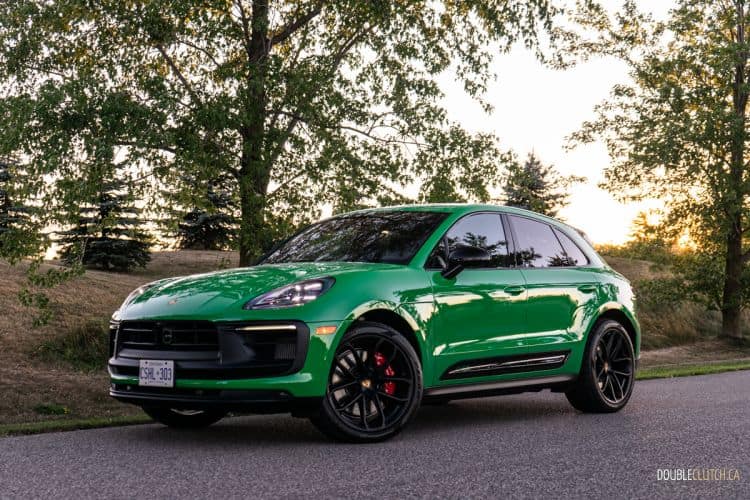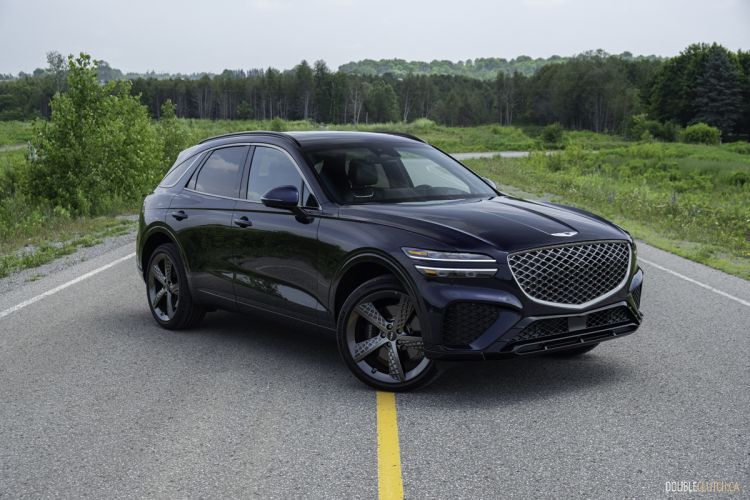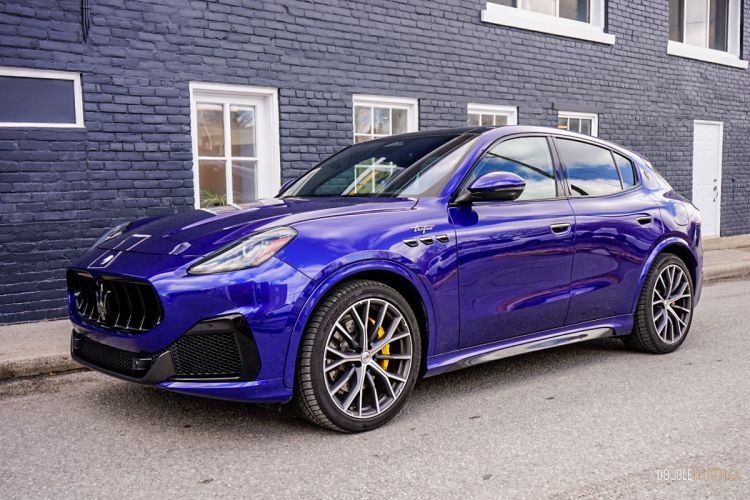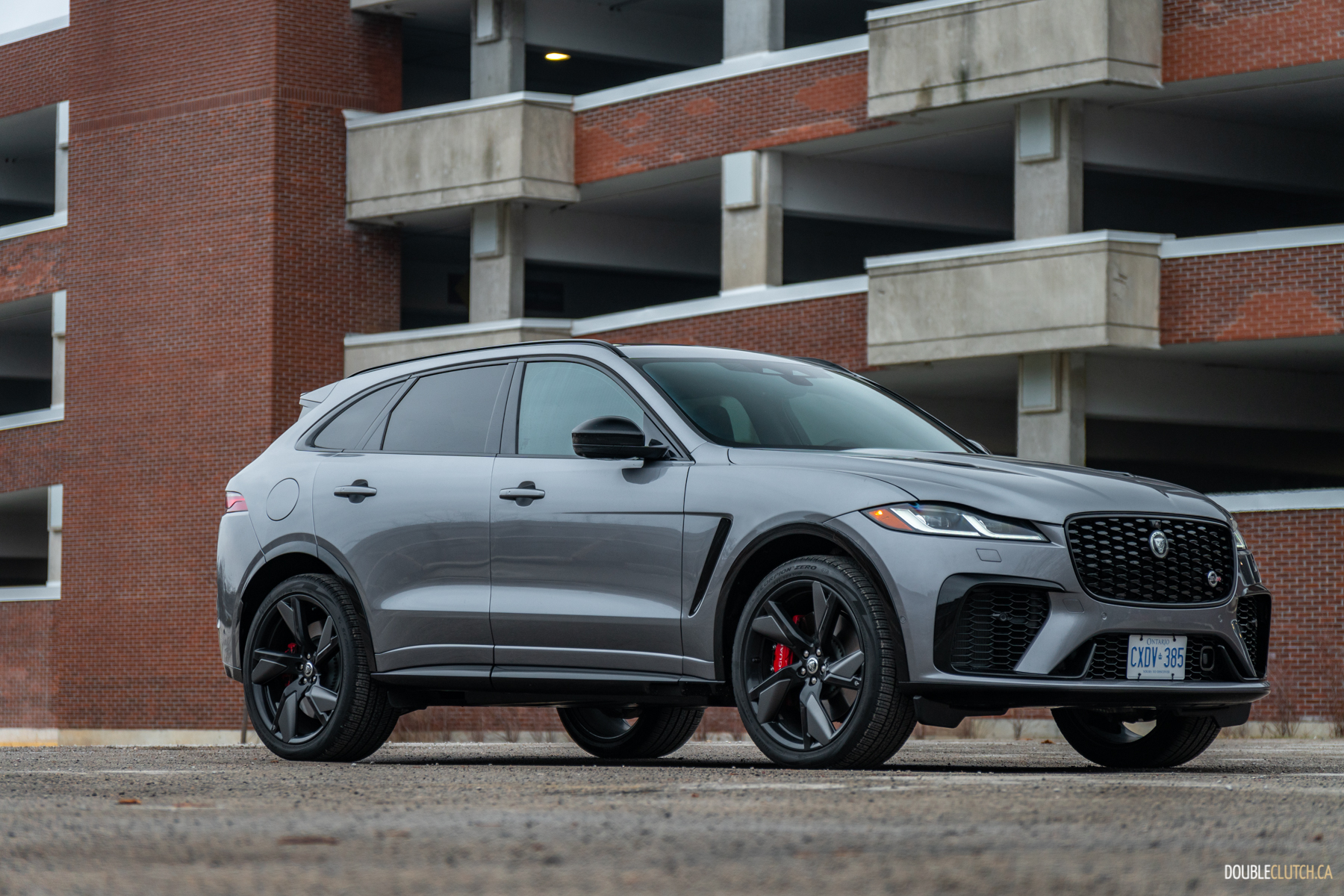You see a lot of Range Rovers on Toronto roads, which is surprising because unlike many other manufacturers, Range Rover hasn’t diluted their brand too much with multiple versions of SUVs and crossovers — here’s looking at you, BMW. The Evoque is certainly an entry-level play and I’d even argue a bit of a side-step for the brand, but I never thought much about the Velar until now. Spending some time with the newly refreshed 2024 Range Rover Velar Dynamic HSE helped me understand it certainly has a place among the Range Rover ranks.
The Velar has been updated for 2024, but you’d be hard-pressed to notice many differences from the original that debuted back in 2017. This isn’t a complaint; the Velar has always been rather good-looking, mimicking its much bigger siblings in the Range Rover lineup for less money. Finished in Zadar Grey and rolling on beautiful 22-inch wheels, the Velar’s aggressive stance makes it look athletic and premium. Contrary to the rest of the lineup, Range Rover is keen on keeping a certain aesthetic to the Velar, limiting colour options to white, black, a greyish blue, and four other shades of grey. Talk about curating a look.
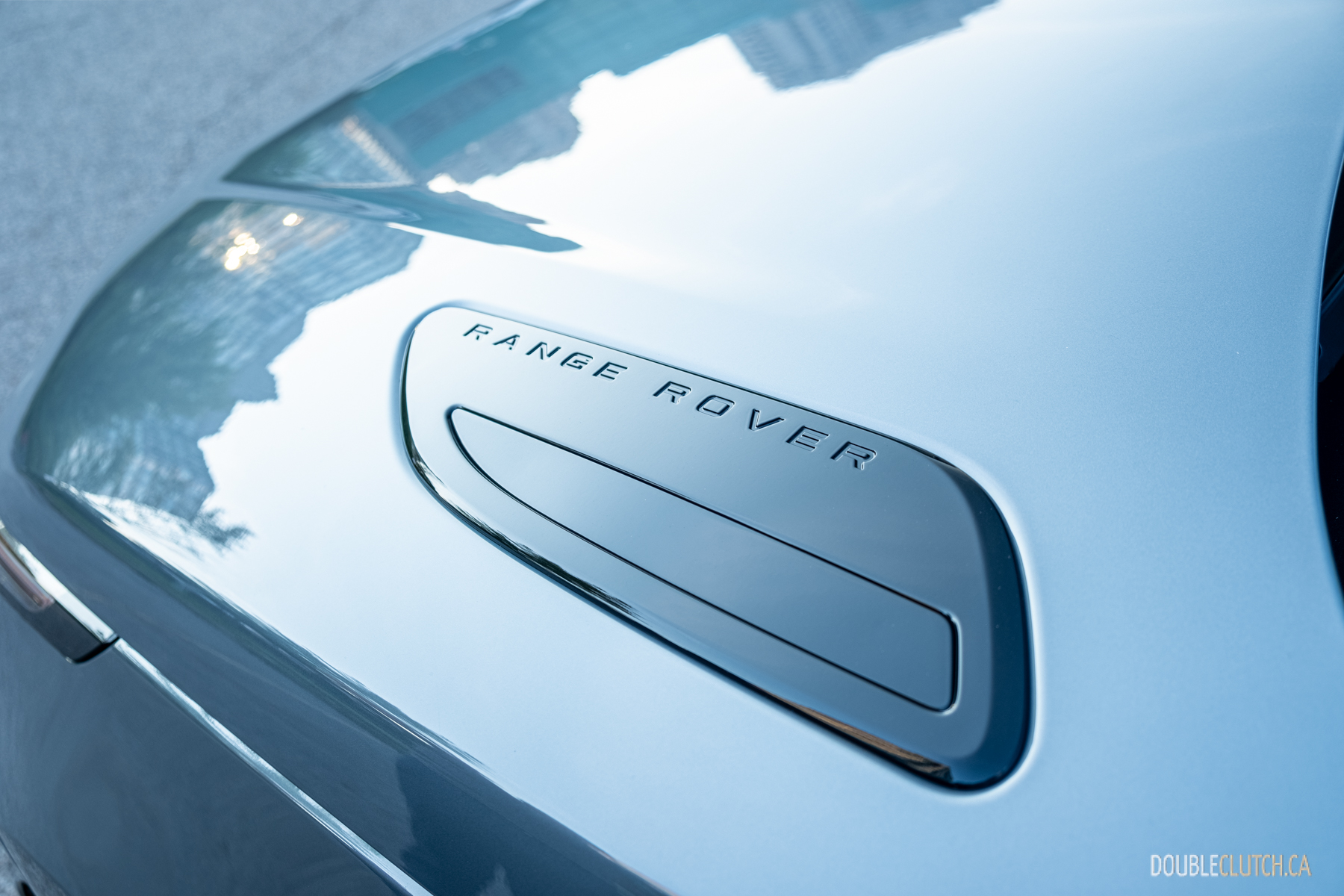
The Velar comes standard with copper accents to add some colour, but our tester was all blacked-out thanks to the optional Black Pack. The front end is unmistakably Range Rover, bearing a familiar grille and headlight treatment to the Sport, along with the obligatory all-caps lettering prominently atop the grille. It would be impossible for anyone to mistaken the Velar for anything else. The rest of the Velar’s look is familiar, favouring chiselled, crisp, and athletic lines versus the bulbous and soft look of some of its competitors. The sporty-looking front and rear bumpers look tasteful, as does the spoiler sitting atop the tailgate, though I would’ve preferred the copper accents on the bumpers, personally. Regardless, it’s a well-buttoned-down look that manages to look more expensive than it is, but not as ostentatious as a big-body Range.
The Velar’s reworked interior is classy in its simplicity and well-screwed-together, although it feels more cramped than you’d expect, which I attribute to the Velar’s “looks bigger than it is” styling. There’s more passenger and cargo space in the Velar than most of its direct rivals, but still, I was shocked at how tight it felt having a rear-facing baby seat fitted behind my five-foot-three wife. The optional Windsor leather option adds contrasting light grey and black leather throughout the cabin, and the seats have a pattern to their perforation that makes it visually interesting.
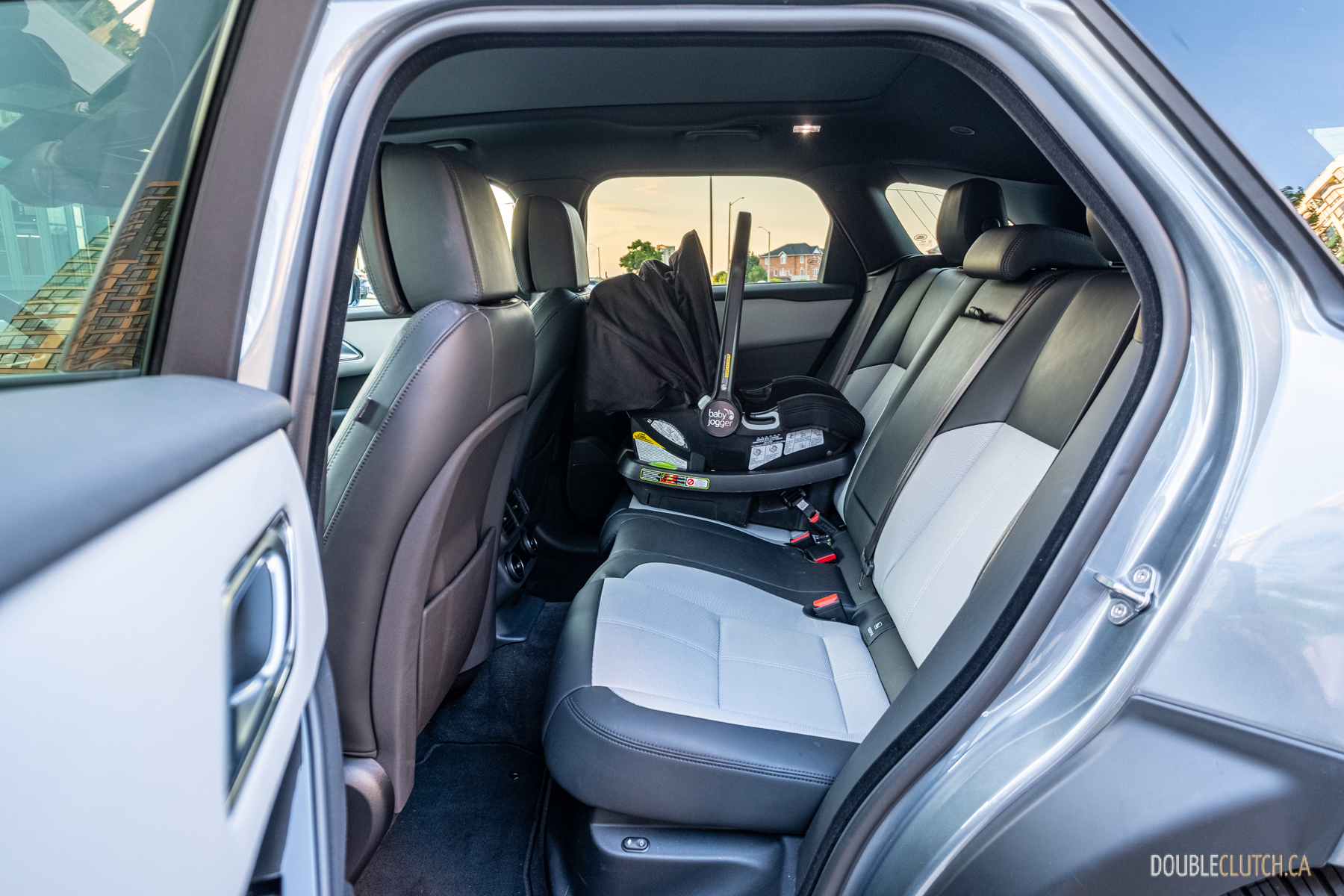
The biggest update inside the Velar is the new infotainment. The clean user interface pairs well with the sharp and snappy graphics, and the overall integration is elegant. The screen measures in at a perfectly adequate 11.4 inches [Size doesn’t matter, it’s how you use it. —Ed.] but something closer to 13 inches would look more appropriate given that Land Rover has done away with the previous Velar’s physical controls. Although it looks very clean, everything is now squeezed onto the screen and is a step back from a usability perspective.
Take, for example, the cooled seats on a hot summer’s day. Before, with the previous model’s physical controls, you’d tap the rotary knob to switch from cabin temperature to seats, twist it accordingly, and tap it again to return to cabin temp. Now, you have to tap the driver’s side climate button to open up the driver’s climate controls, tap the cooled seats, and then tap the ‘X’ to close the menu.
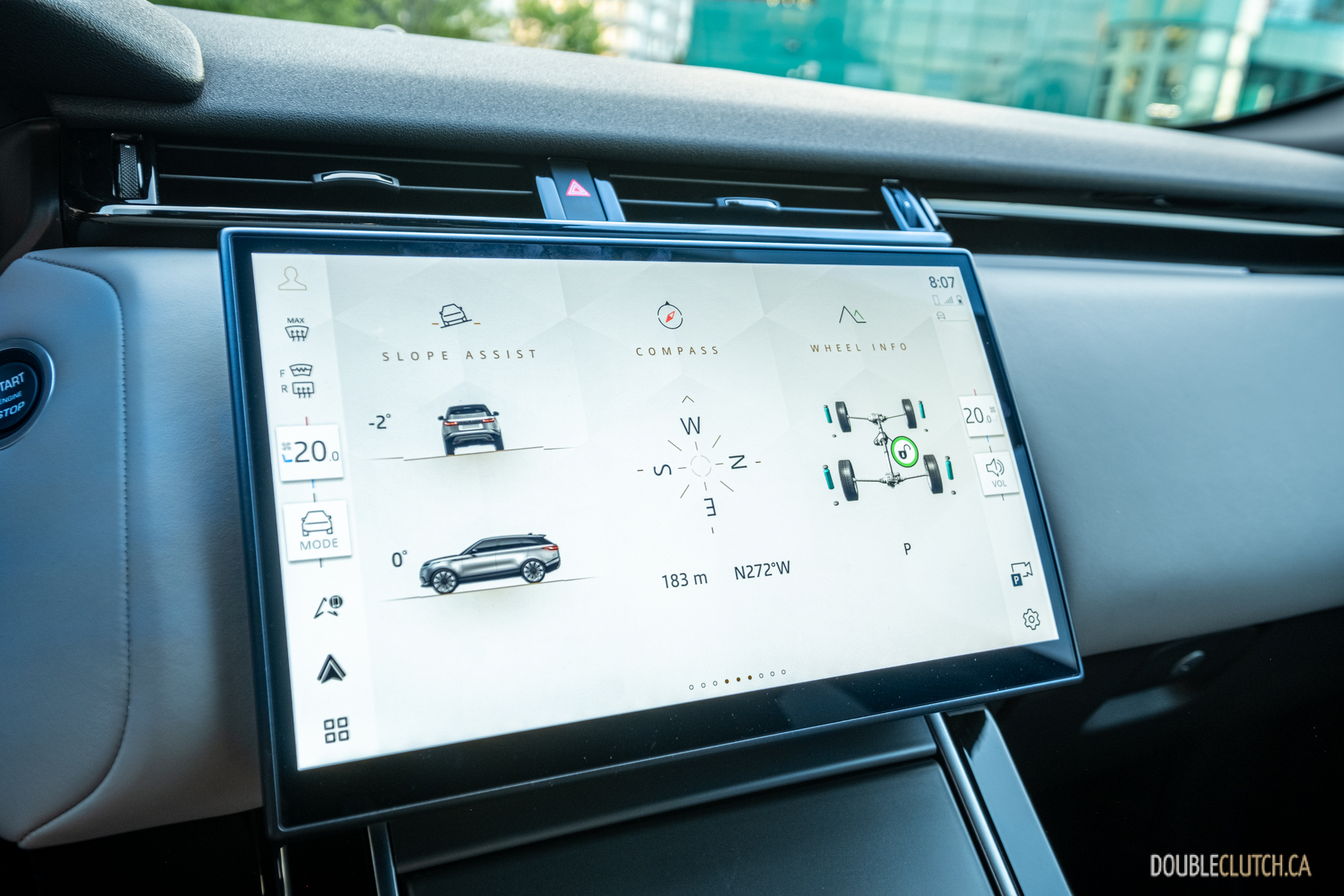
And if you want to turn on the cooled seats for your passenger, you need to repeat all that on the other side of the screen. That’s six taps, and it feels especially cumbersome compared to the previous Velar, whose dials and physical switchgear worked so much better. Speaking of climate control, the 2024 Velar can be optioned with four-zone climate control — rubbing salt in the wound, the rear climate controls retain the old-style dials — and air filtration tech called Nanoe, which helps purify the air within the cabin. How luxurious!
As before, Range Rover uses Meridian for its audio systems. Maybe it’s just me, but I’ve never particularly enjoyed them. I generally like the surround-sound effect of many other premium systems — I know this isn’t very audiophile of me; shoot me — but the Meridian system feels poorly calibrated, as does the overall sound balance in any mode. It’s a punchy system, but the bass feels like it bottoms out when it shouldn’t, and the vocal sound staging wasn’t much to write home about. I give it a B– at best.
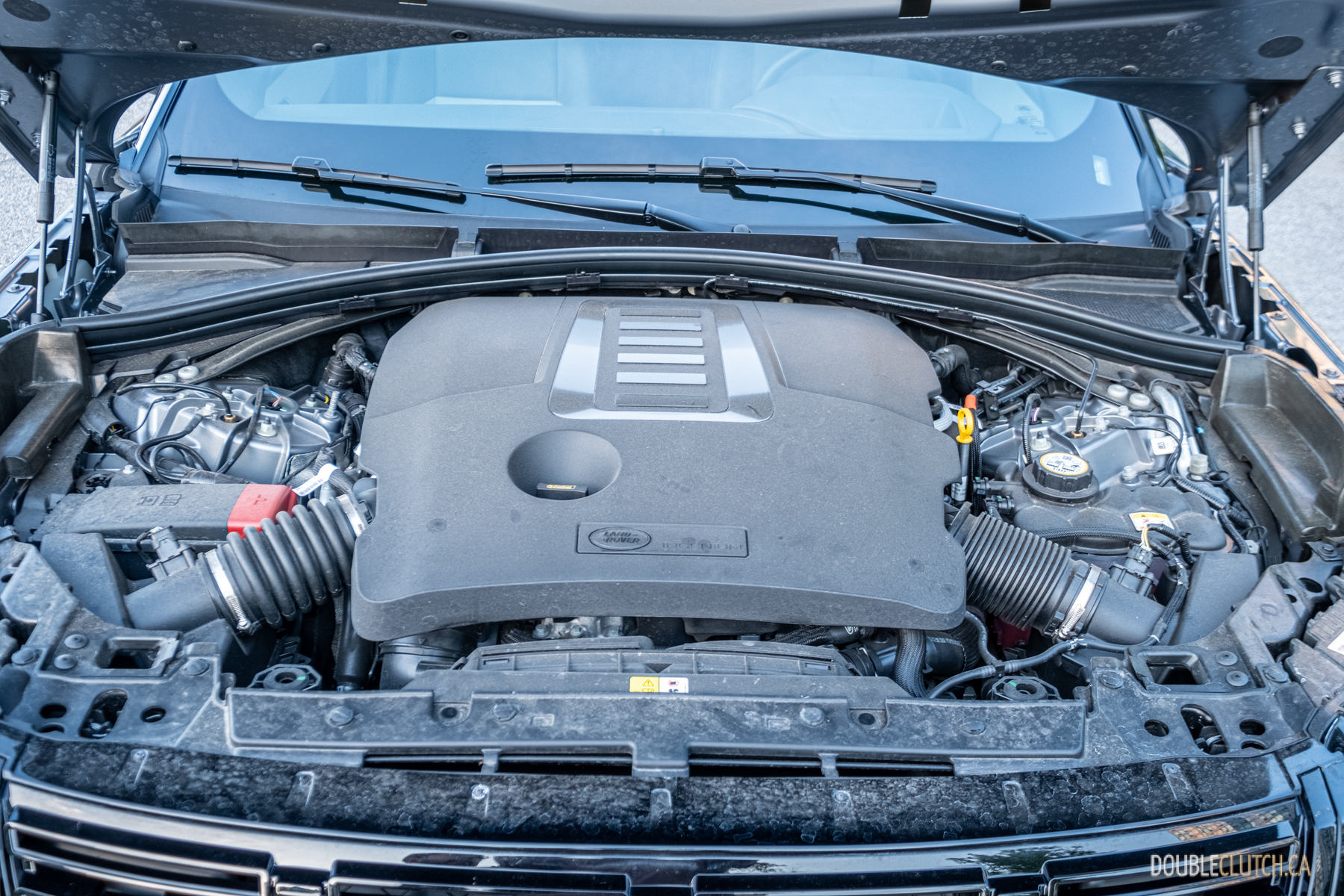
But the Velar has a lot going for it mechanically. It uses a 3.0-litre turbocharged inline-six with a mild hybrid assist, which may sound a bit convoluted at first, but it’s buttery smooth and appropriately powerful in practice. The power numbers aren’t off-the-charts, with 395 horsepower and 406 pound-feet of torque on tap, but peak torque is available early in the rev range and the engine builds power in a velvety way. Plus, a zero-to-100 km/h sprint in 5.5 seconds isn’t too shabby.
It’s paired to an eight-speed automatic transmission, which feels a bit clunky at times. And tied to the abrupt and sometimes confused nature of the auto start/stop system, the experience isn’t perfect, but still forgivable. Though the engine builds power smoothly, throttle mapping — particularly tip-in — is a little too aggressive in most of the Velar’s drive modes. I found it challenging to get going smoothly; I’d try to feather the gas, but anything beyond, say, the first five per cent felt like power suddenly came on, and the Velar lurches forward. It’s not ideal, but I suppose most owners would get used to it after a few weeks, and it’s forgivable since the engine itself is wonderful. Of course, power is sent to all four wheels via an excellent all-wheel-drive system, but most Velars probably won’t see much time in dirt and mud.
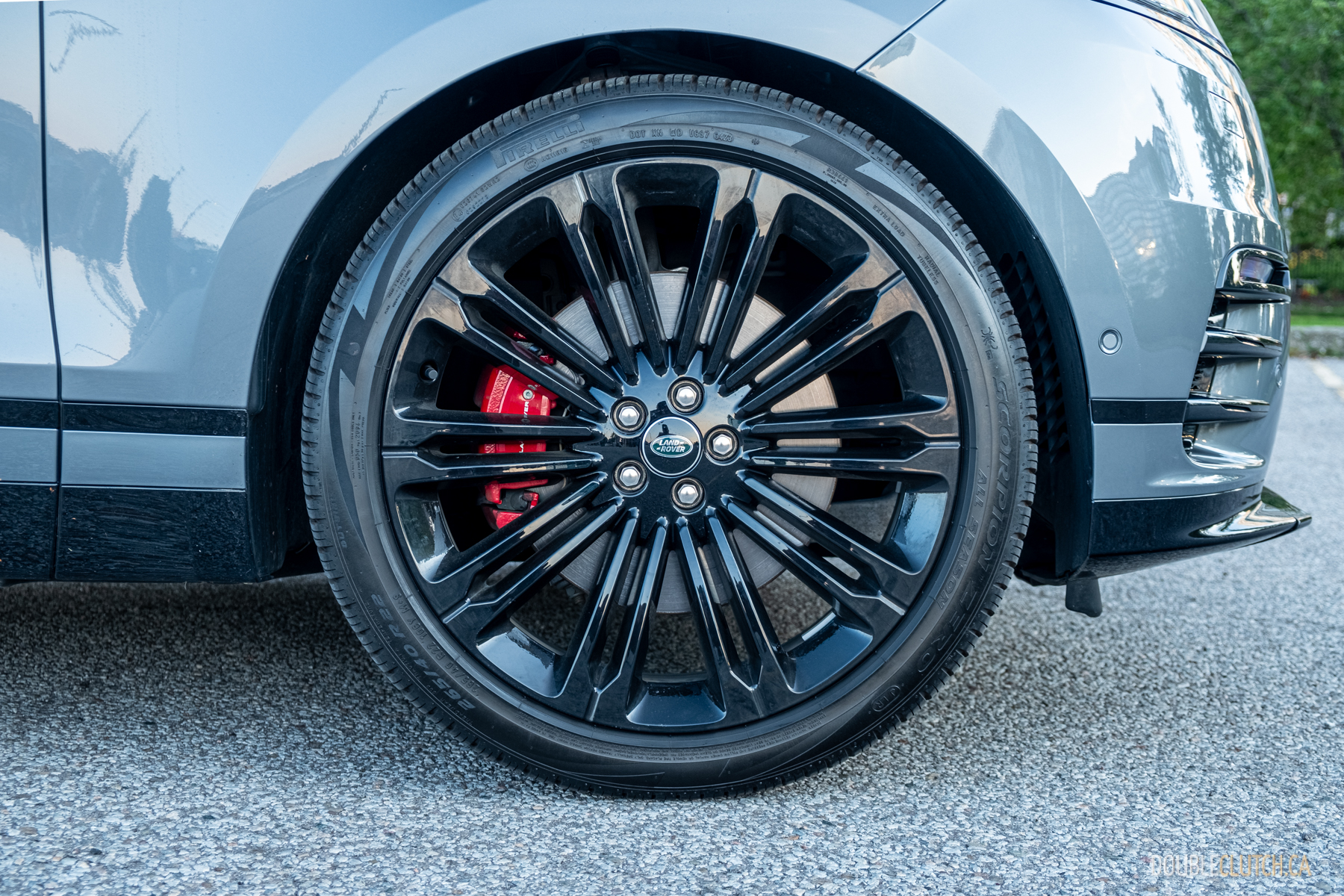
The Velar’s air suspension setup balances ride quality and cornering performance well, especially optioned with the Dynamic Handling Package. Even in this sportiest of trims and riding on 22-inch wheels, the Velar never felt jarring, but it doesn’t quite match the athleticism of a Porsche Macan GTS or an Alfa Romeo Stelvio Quadrifoglio. Then again, neither of those emphasize luxury like the Velar does; if those two are considered the sports cars of the segment, the Velar confidently takes the gran-tourer mantle. I reckon a lot more people prefer that.
And I imagine a lot of people would prefer a 2024 Range Rover Velar Dynamic HSE over a Macan and Stelvio for the very premium vibe. You can help but feel like success in it. Even though it’s one of the baby Range Rovers, slotting above the Evoque but below the Sport, the Velar does a rather masterful job of feeling like you’re driving something that costs more than its $103,762 as-tested price. The Velar doesn’t necessarily encourage you to drive hard, but it’s just athletic and just powerful enough to feel competent while never letting go of the luxury-first persona it so effortlessly exudes.

